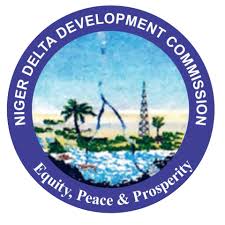RECENTLY, the Niger Delta Development Commission (NDDC) rolled out the drums to celebrate its 25 years of existence. The anniversary, both momentous and remarkable, conveyed a statement about its survival and the considerable interventionist measures it has deployed to address the needs of the nine oil-producing states in the country. Part of the activities witnessed during the week-long celebration was a film premiere at Asaba, Delta State capital, that reached a climatic point in Port Harcourt, the Rivers State capital, and its headquarters.
Without a doubt, the NDDC was justified to have celebrated its silver jubilee against the backdrop of its survival vis-a-vis the short-lived status of its precursors. The Oil Mineral Producing Areas Development Commission (OMPADEC) lasted for only seven years after its establishment by the Babangida military administration in 1992. The same fate marked the existence of the Niger Delta Development Board (NDDB), which was established after Nigeria’s independence in 1960.
The birth of the NDDC in June 2000 by the President Olusegun Obasanjo administration was informed by the need to address the development-related issues in the Niger Delta region. With Nigeria’s return to democratic rule, the new government needed a platform to attend to the growing agitations and militancy occasioned by the long years of neglect. Rather than inherit the problematic OMPADEC, which had apparently outlived its usefulness, the then President Obasanjo wanted something new for the region.
In retrospect, a 10-point mandate was articulated for the formulation of policies and guidelines for the development of the Niger Delta area. These include conception, planning, and implementation in accordance with set rules and regulations of projects and programmes for sustainable development of the region in many sectors that would benefit the numerous oil-producing communities.
Today, a fair assessment of the agency shows some positive developments in a number of sectors, while a few areas have been partially attended to. Among the areas so far impacted include roads, jetties, shorelines, electricity, environmental remediation, and medical outreach, to name but a few. The most noticeable of the multiple projects so far executed by the NDDC are roads that dot the nooks and crannies of the oil-producing areas and contiguous impacted zones within the nine states. There are quite a number of roads constructed in places where they were either nonexistent or in decrepit conditions for many years.
While most of the arteries are short distances, either linking one community to another or internal road networks, the most ambitious category covers kilometres of difficult terrain that were hitherto deemed unachievable. Two of the completed projects include, but are not limited to the 25.7 kilometreOgbia-Emekalakala-Akipelai-Etiama- Nembe road, which included seven bridges, and the Iko-Atabrikang- Akata-Opulom-IkotInvang-Okoroutro-Iwo change road with the 800-metre Ibenobridge.
Added to the provision of roads is the agency’s improvement of the pitiable condition of the area by facilitating the electrification of numerous communities yet to be linked to the national grid. A notable project is a 132 KV/33KV electricity substation at Ode-Eriye in Okitipupa local government area of Ondo State.
Perhaps the most enduring is the postgraduate scholarship awards to deserving indigenes of the area that continue to enhance the human capital development. The most beneficial aspect is that in giving out the awards, the NDDC is emphatic on key areas that are critical to the development of the region in particular and the country in general.
However, the NDDC is currently dogged by many factors, some of which are congenital to its birth, while others reflect the dominant issues impeding the country’s all-round development. The agency has been constrained by the constant change of leadership so much so that no less than 18 managing directors had presided over its affairs in the last quarter of a century. Other problems include project abandonment, which currently stands at 13,000 as of 2021, irregular remittance of the federal government’s 15 per cent statutory allocation to the agency, corrupt practices in contract awards; and undue feasting on the NDDC by the political class, especially those in the ruling party.
On the whole, NDDC has performed relatively well, given the circumstances under which it has operated within the intervening years. There’s, however, room for a greater performance. All that’s required to boost the growth and performance of the agency is to find solutions to the aforementioned encumbrances, which are human. We believe that a well-positioned NDDC would be more alive to its responsibilities as captured in the legal instrument that established it.


